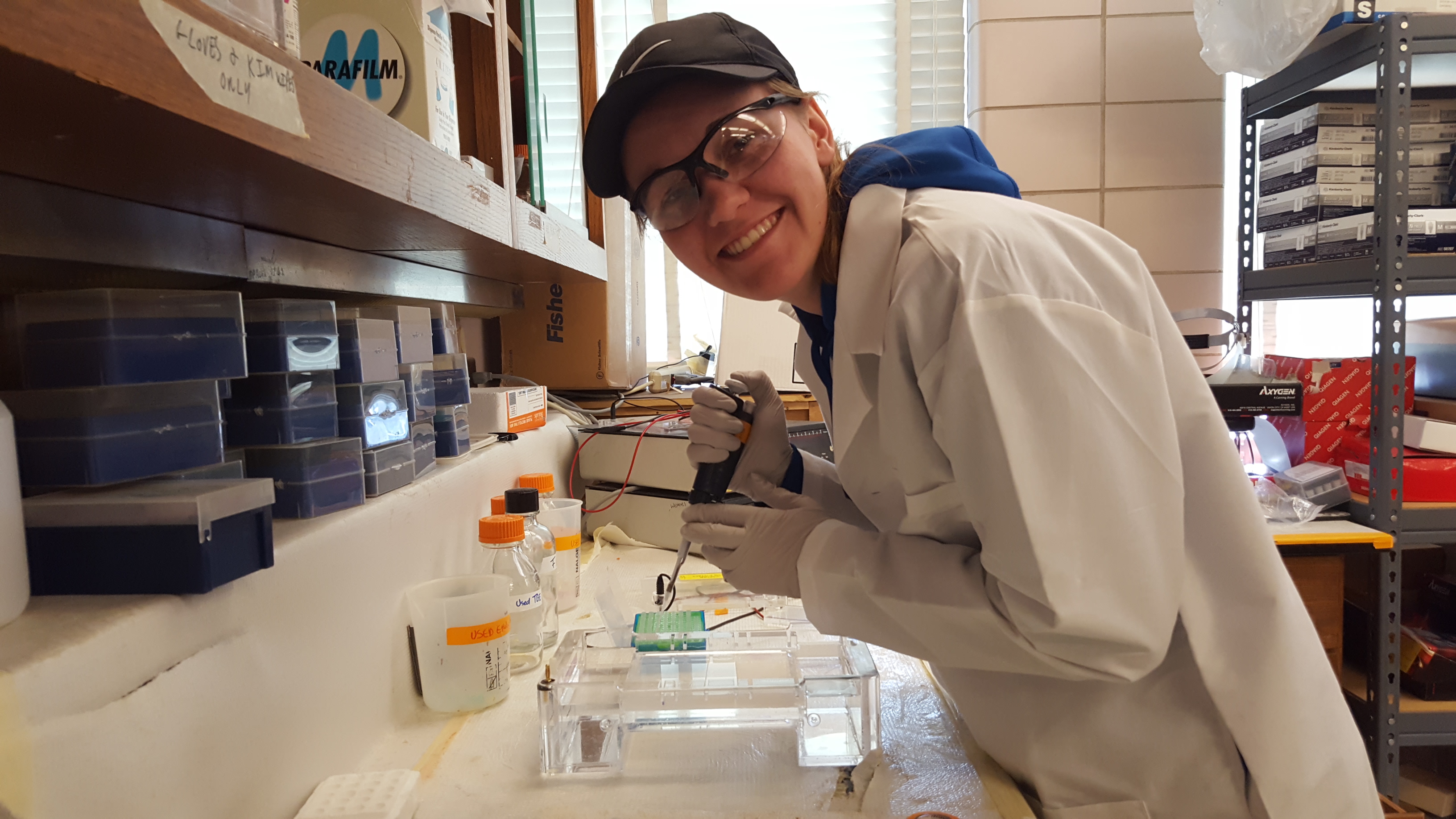
Natalie Vance (’18 biology) unravels the genetic diversity of the sycamore fig in the lab of John Nason, professor and chair of ecology, evolution and organismal biology.
Vance works on DNA extraction from leaves of the sycamore fig, found throughout sub-Saharan Africa in the wild. The tree has also been cultivated across North Africa and the eastern Mediterranean for at least 6,000 years.
"Successive civilizations have depended on it in myriad ways: it provides shade. Its sap is regarded for medicinal uses. Its branches yielded robust timbers for the construction of sarcophagi, ships, and temples," Nason said.
Vance approached Nason about working in his lab after taking his class on evolution. The experience has given her an insightful look into the world of research.
"It’s a lot different than when you’re in a room with a bunch of other students," she said. "When you’re in a lab with one grad student who is working specifically with you and showing you how to do these different processes, you learn the how and why behind everything a little more in depth."
Vance works with Finn Piatscheck, a graduate student in ecology, evolution and organismal biology, to extract DNA from leaf samples from the tree, which are then sequenced for genetic analysis. The research aims to uncover the genetic history of the trees, including how the cultivated trees have changed compared to the wild trees.
"[We’re] looking to see mainly what the genetic differences are between those subsets of fig trees," Vance said. "To see over time how different activities have changed their genetics, whether that be due to different evolutionary processes or climate change or human impacts."
The research will improve scientific understanding of the genetic variation and evolution in the trees as well as potentially provide insight into how human behaviors can help the plant species continue to thrive, despite threats from urbanization and climate change.
The current technique for DNA extraction is limited to leaf samples, requiring living plant species. But Vance is also helping the lab investigate the possibility of using wood samples to do the same DNA extraction, which could allow for analysis of wood samples thousands of years old.
“She has shown that she can successfully obtain DNA from the wood of this tree and she hopes to be able to do the same from ancient samples of F. sycomorus wood obtained from the sarcophagi (coffins) of Egyptian pharaohs,” Nason said. “The ancient Egyptians revered F. sycomorus trees for their fruit and wood and it is an exciting and rare opportunity to study the past and present genetic diversity of a species through its intersection with human culture.”
The ancient wood is being supplied by collaborator Dr. Pearce Paul Creaseman, Director of the University of Arizona Egyptian Expedition.
Vance will apply to medical school in the spring and credits her lab experience with boosting her readiness and giving her a deeper understanding of science.
“I’ve had a more personal and in-depth learning opportunity that has shown me the importance of research,” Vance said. “Although I want to go to medical school and become a practicing physician, I feel as though I have a better appreciation and understanding of the research side of science.”